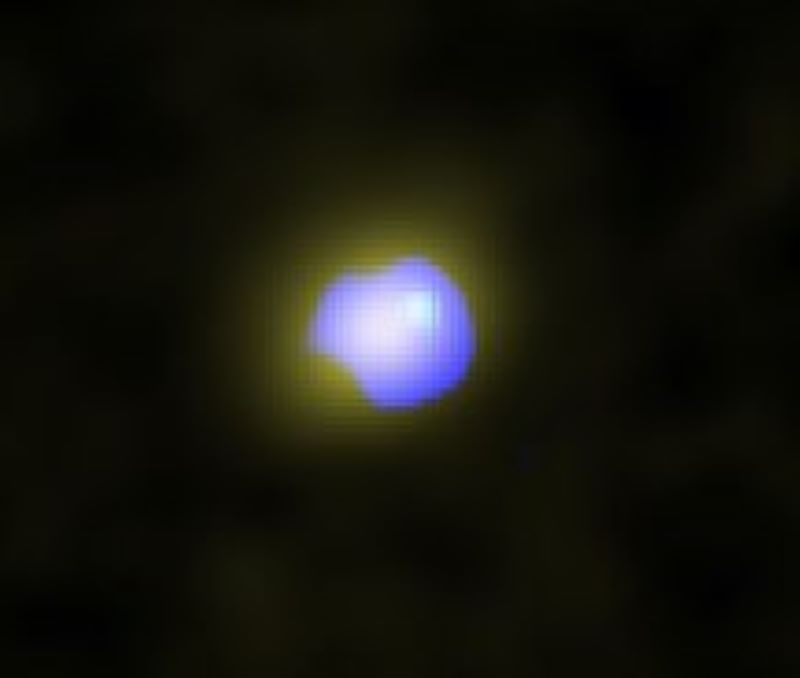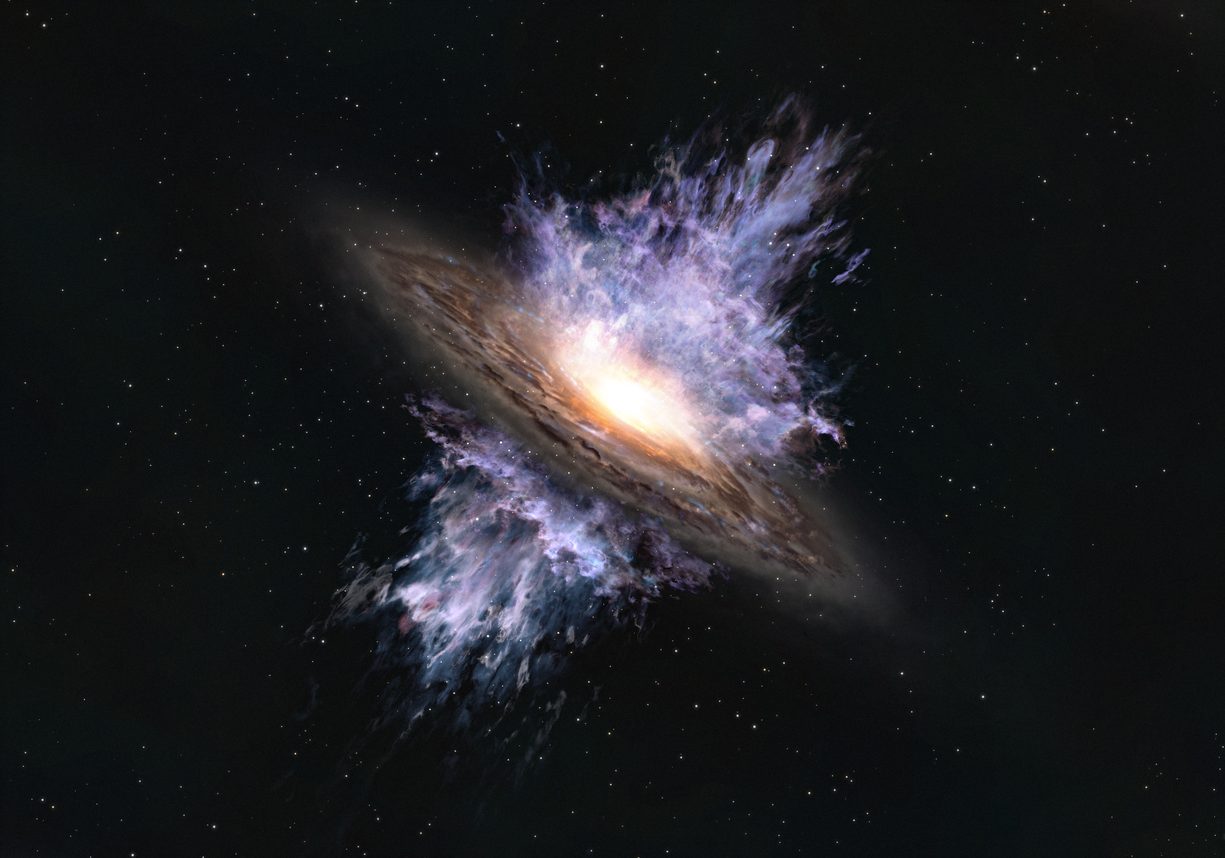The birth of supermassive black holes from dark matter – and their growth
The universe is about 13.8 billion years old. In the beginning, there were no stars in it. But 600 to 800 million years later already mighty galaxies existed with gigantic black holes in their center, which are millions to billions times heavier than our sun. But where did these giants come from? For a long time it was assumed that they could have been formed by the collapse of gas clouds in protogalaxies. But the result is unsatisfactory. In this way, the black holes simply don’t grow fast enough.
A team led by a theoretical physicist at the University of California, Riverside, has now found another explanation: It envisions a massive black hole as a nucleus that could be created by the collapse of a dark matter halo. Such halos surround just about every galaxy or galaxy cluster. Although dark matter has never been detected in the laboratory, physicists remain convinced that this mysterious matter, which makes up 85 percent of the matter in the universe, exists. If a galaxy’s visible matter were not embedded in a dark matter halo, that matter would fly apart.
The dark matter particles initially cluster together under the influence of gravity, forming a dark matter halo. As the halo develops, two competing forces – gravity and pressure – interact. While gravity pulls the dark matter particles inward, pressure pushes them outward. If the dark matter particles do not self-interact, then they become hotter as gravity pulls them toward the center, i.e., they move faster, the pressure effectively increases as a result, and they bounce back. However, in the case of dark matter interacting with itself, the self-interactions can transport heat from these “hotter” particles to nearby colder particles. This makes it difficult for the dark matter particles to bounce back. During the collapse process, the central halo, which has a fixed mass, shrinks in radius and slows its rotation due to viscosity. As it evolves, the central halo eventually collapses into a singular state: a black hole. This seed can become heavier by accreting surrounding baryonic (visible) matter such as gas and stars.
A galactic wind can provide this type of physical interaction between black holes and galaxies. A supermassive black hole swallows a large amount of matter. When this matter begins to move at high speeds due to the black hole’s gravity, it gives off intense energy that can push the surrounding matter outward. This is how the galactic wind is created.
“The question is when did galactic winds form in the universe?” said Takuma Izumi, lead author of another research paper and a researcher at the National Astronomical Observatory of Japan (NAOJ). “This is an important question because it is related to an important problem in astronomy: how did galaxies and supermassive black holes co-evolve?” The research team first used NAOJ’s Subaru telescope to search for supermassive black holes. Thanks to its wide-field observation, they found more than 100 galaxies with supermassive black holes in the universe more than 13 billion years ago. The research team then used ALMA’s high sensitivity to study gas motion in the black holes’ host galaxies. ALMA observed the galaxy HSC J124353.93+010038.5 (hereafter J1243+0100) discovered by the Subaru telescope and captured radio waves emitted by the dust and carbon ions in the galaxy.
A detailed analysis of the ALMA data revealed that there is a high velocity gas stream in J1243+0100 moving at 500 km per second. This gas flow has enough energy to push away the stellar material in the galaxy and stop star formation activity. The gas flow found in this study is truly a galactic wind, and it is the oldest observed example of a galaxy with a giant galactic-sized wind. The previous record holder was a galaxy about 13 billion years ago, so this observation pushes the beginning back another 100 million years.
The team also measured the motion of the quiescent gas in J1243+0100 and estimated the mass of the bulge to be about 30 billion times that of the Sun. The mass of the galaxy’s supermassive black hole, estimated by a different method, was about 1% of that. The mass ratio of the bulge to the supermassive black hole in this galaxy is thus almost identical to the mass ratio of black holes to galaxies in the modern universe. This implies that coevolution of supermassive black holes and galaxies has been occurring for less than a billion years after the birth of the universe.

